A central tenet in Chinese Kung Fu named the ‘Six Harmonies’ acts as a holistic framework that I believe is key for lifelong personal growth.
I found the application of Six Harmonies in my own personal development to be so profound that I am disappointed that it isn’t discussed much in the English-speaking world. To me, it is a practical framework that you must learn if you want to grow into the best version of yourself.
So, in this newsletter, I will break down the Six Harmonies framework into its key lessons and share how I apply it to my own self-development. I also include a complimentary tool so that you can immediately make use of the Six Harmonies framework in your own personal development.
Wing Chun and The One-inch Punch
So, a bit of backstory.
I picked up a little bit of Wing Chun first when I was living in Tokyo and also in London. Wing Chun is primarily a striking martial art like Karate or Taekwondo where you use your fists and feet to hit your opponents.
It became popular through Hollywood action movies because of Bruce Lee, who’s foundational martial arts was Wing Chun, as taught by the famous Master Ip Man in Hong Kong. Unashamedly, I only got interested in the martial arts after I watched movies like Enter The Dragon and Ip Man.
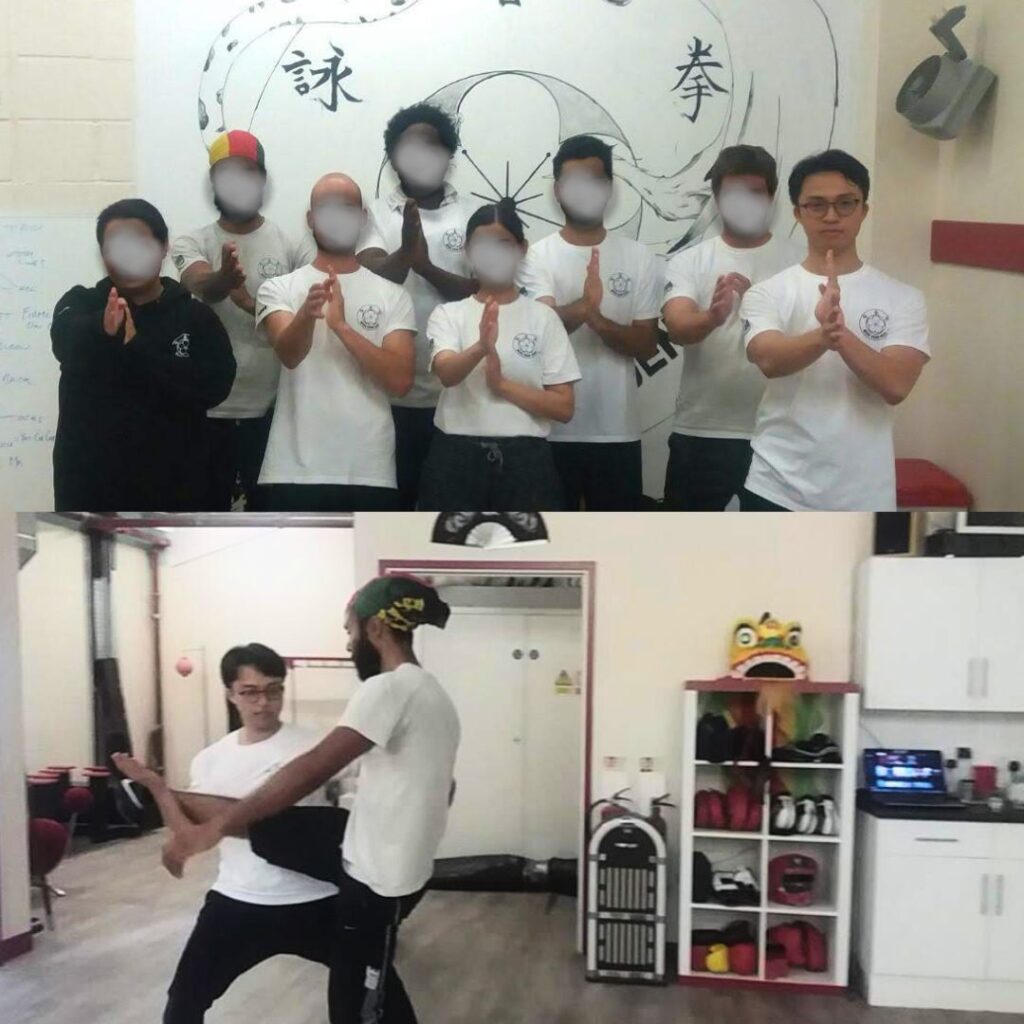
What fascinated me when I was learning Wing Chun was this idea of ‘physical and mental unity’ when throwing a punch. It is best summed by this popular saying in Kung Fu:
“When the hands arrive the whole body arrives.”
This is to say that the force of the punch thrown by a martial artist does not come from only the hands. The entire body participates and generates the force behind the punch.
A great visual example is Bruce Lee’s one-inch and six-inch punch:
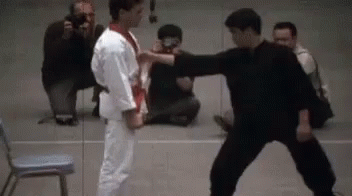
Watch how his entire body moves in unison when delivering the punch.
The feet provide firm ground for the entire leg to kick from to push the torso in motion while the back and shoulder muscles spark energy to propel the arms forward with momentum to throw a powerful punch.
Your hand is the final tool for the task (throwing a punch), but your entire being gets the job done (generating power into the punch).
Bruce Lee’s demonstrations above show the Six Harmonies’ principles in practice, but only in the physical aspect.
Let’s dive deeper to understand the central tenet behind the power of his punches.
Six Harmonies
The Six Harmonies (六合) is a framework that places importance on developing harmony and balance within oneself. In the context of martial arts, this framework guides martial artists how to find body-mind synchronicity so that they can deliver swift and powerful strikes.
The six harmonies are made up of Three External Harmonies (外三合) and Three Internal Harmonies (三內合).
The Three External Harmonies are the:
- Union of the hands (手) and feet (足)
- Union of the elbows (肘) and knees (膝)
- Union of the shoulders (肩) and hips (胯)
The Three External Harmonies are a bit more obvious and easier to understand. They are more focused on the mechanical joints of the body’s ability to move in harmony to be able to deliver powerful movements to strike.
Meanwhile, the Three Internal Harmonies are the:
- Union of the heart (心) and intention (意)
- Union of intention (意) and energy (気)
- Union of energy (気) and power (力)
Meanwhile, the Three Internal Harmonies relate to the different aspects of the mind including our emotions, will power and spirit. They are concerned with the unison of the mind to consciously execute those forceful strikes.
To put it in an analogy, a sharpened sword is important in a swordfight, but it is no use if you have no courage nor will to wield it. Another saying is;
“It is not the size of the dog in the fight, but the size of the fight in the dog.”
This is what the Three Internal Harmonies addresses.
While the disciplined training of Kung Fu does not ignore the importance of developing the individual aspects of the body and mind, it is only when one is able to balance the Six Harmonies – harmonise the body and mind – that one truly becomes a master martial artist.
Six Harmonies for Self-Cultivation
What I love about the Six Harmonies framework is that it is a more holistic approach of training oneself that prioritises balance and harmony. It teaches us that:
- Rather than simply focusing on developing our individual parts, it is just as important that we develop the bonds between the individual parts.
- Even if you are extremely strong in one aspect, ‘you are only strong as your weakest link’. So, balance your personal development in all aspects rather than focusing on just one aspect.
And these key lessons can be applied to all levels of our lives.
To build an excellent team, instead of just nurturing individual talents, focus on creating stronger bonds amongst the team members to cultivate greater chemistry and teamwork.
To build a strong family, don’t concentrate on what each family member does for or and brings to the family. Instead, focus on building a loving and harmonious relationship where you can lean on each other to overcome difficulties.
To build a better version of yourself, don’t just focus on developing the different areas of personal growth in isolation. Remember to also find out how different areas can harmonise with one another and build a strong bridge between them.
So, how do we practically apply this to our own personal growth?
Harmonise your Areas of Growth
When it comes to drawing out my future life plan using an Odyssey Plan or planning my 12-Week Grind for personal development, I like to separate the different aspects of my personal development into 6 Areas of Growth.

While the conventional method of developing each Area of Growth has merit, you and I now recognise the benefits of finding harmony between the six Areas of Growth.
Here’s how I apply the Six Harmonies framework to my personal growth plans:
How to apply the Six Harmonies for Personal Growth
What I do is I try to find ways where developing one Area can be paired with the growth of another Area.
Here’s an example of how I harmonise the development of Physical Health with other areas:
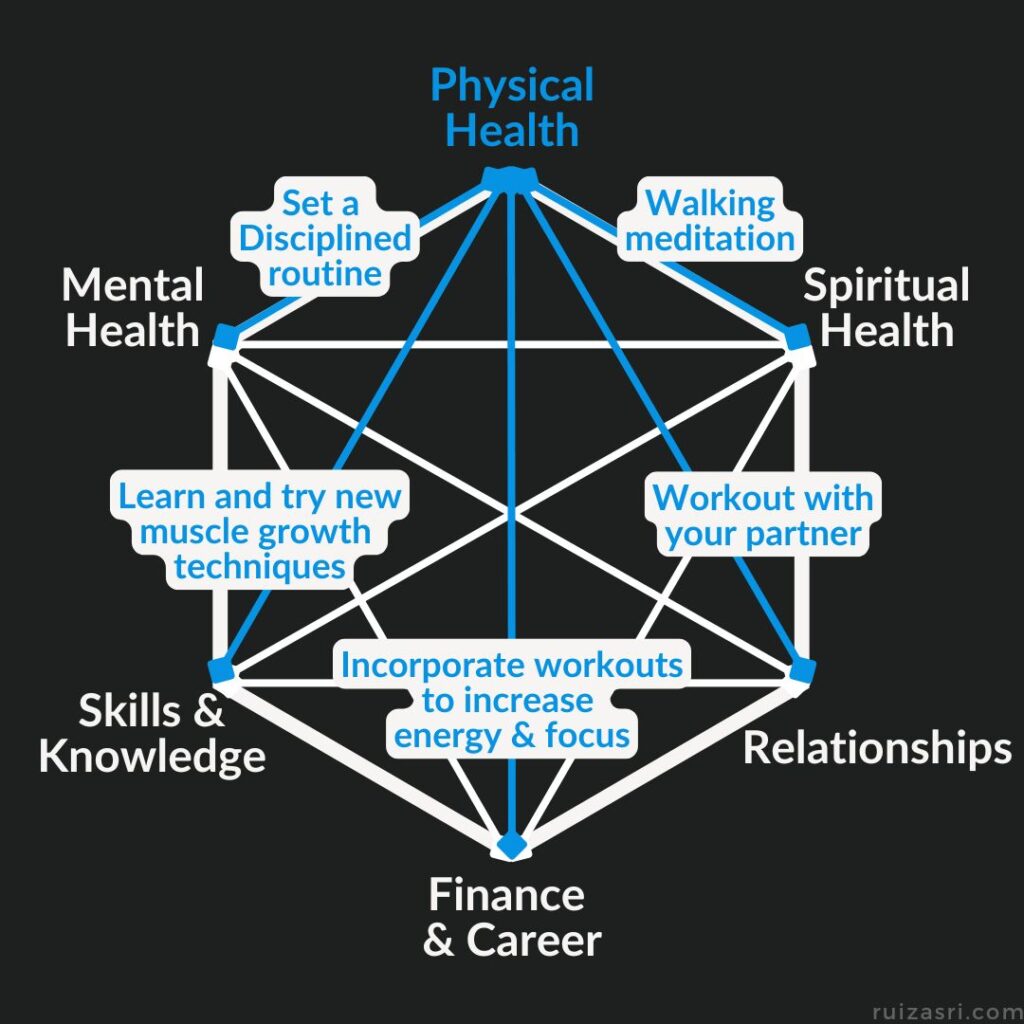
Walking meditation is one example of a whole new activity I’ve taken up to strengthen the connection between two areas: Physical and Spiritual Health.
However, in many cases, I just incorporate a variation of an existing routine. For example, from time to time, I will get my wife to join me in my jogging sessions at the park. This fosters the opportunity for a closer relationship with my wife AND I still get to complete my workout routine.
I would try and do the same for my other Areas of Growth too. Here’s another example where I try to harmonise my Mental Health efforts with other Areas.
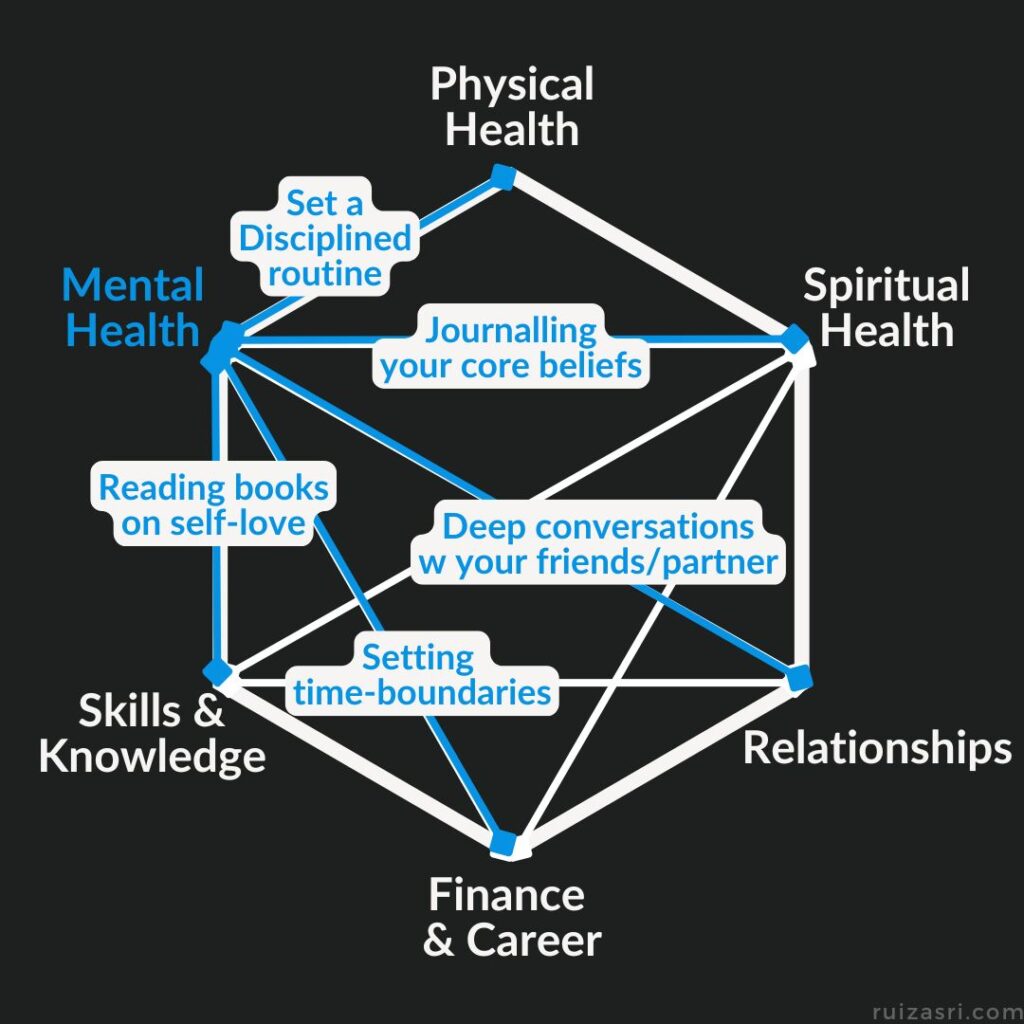
The drawings above help me visualise the link between each Area of Growth and how they can harmonise with one another.
However, to view it as a whole to make sure I cover all Areas of Growth and harmonise all of them, I fill out a simple Six Harmonies Matrix. You can see my example below:
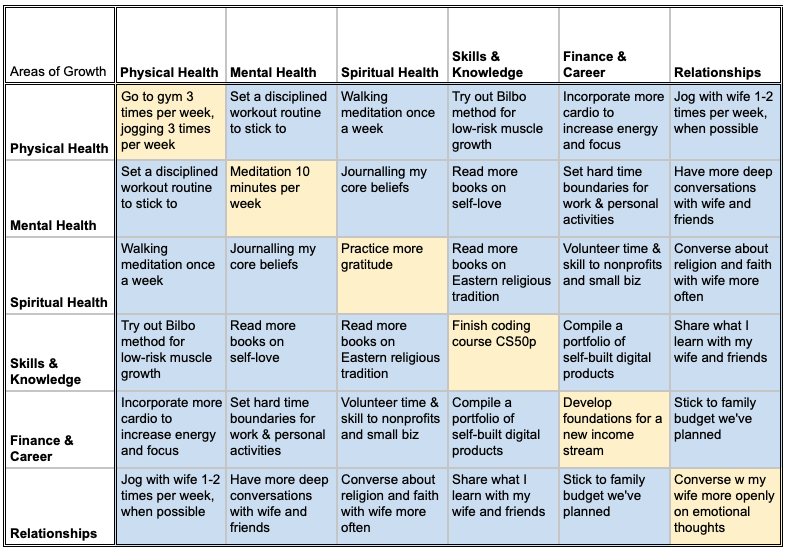
To complete the Six Harmonies Matrix,
- Fill in your focused efforts for the individual Area of Growth.
- Then, think of and write out new efforts that you can do that harmonise between the different Areas of Growth.
When I am busy focusing on growing each area of our lives, it’s easy to forget the links in between each one. By using this matrix, I find it easier to make sure I do my best to harmonise them altogether.
If you’re interested in making your own, feel free to use my Six Harmonies Matrix template on Google Sheets by clicking below:
Till next week,
Ruiz
